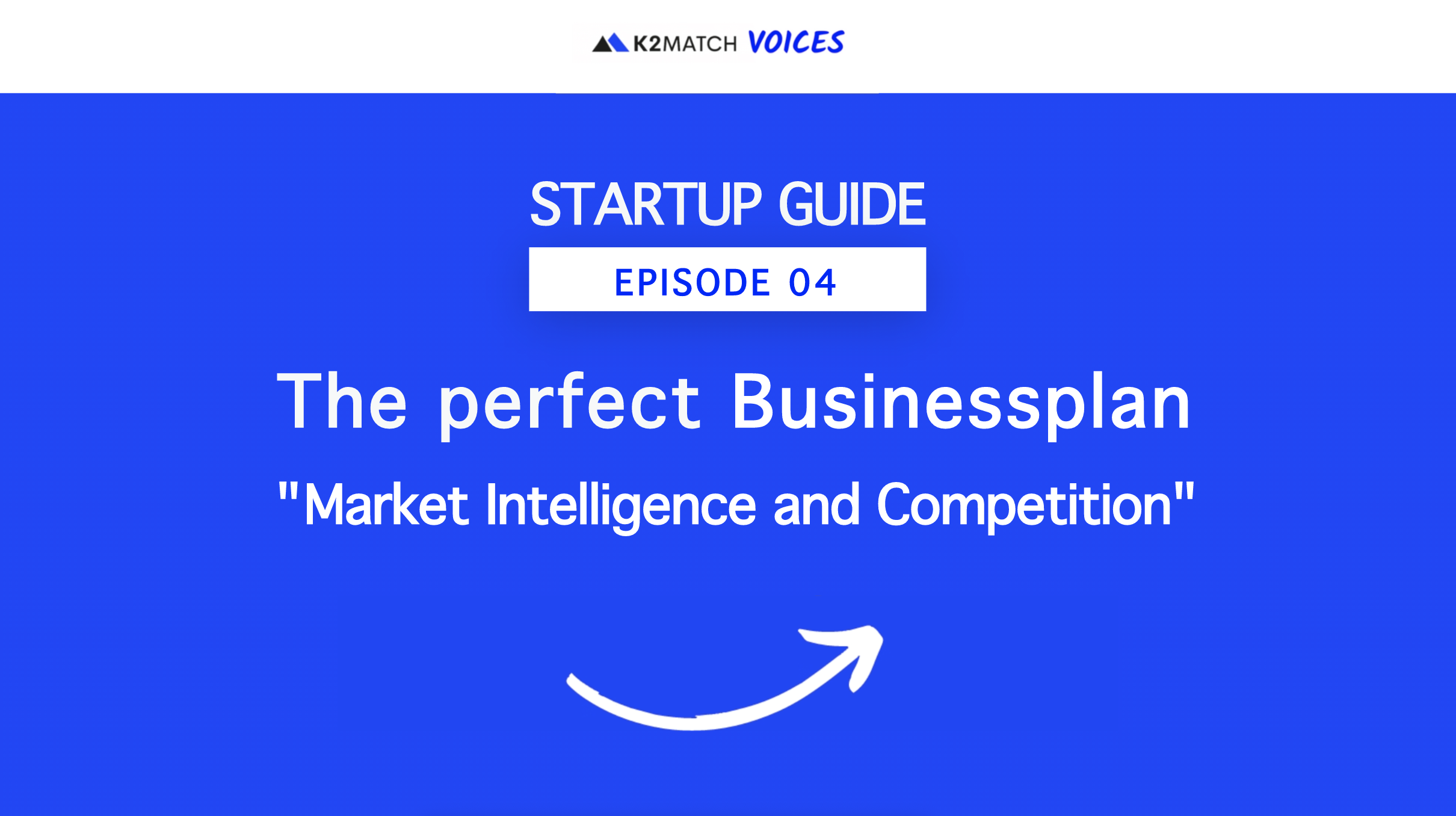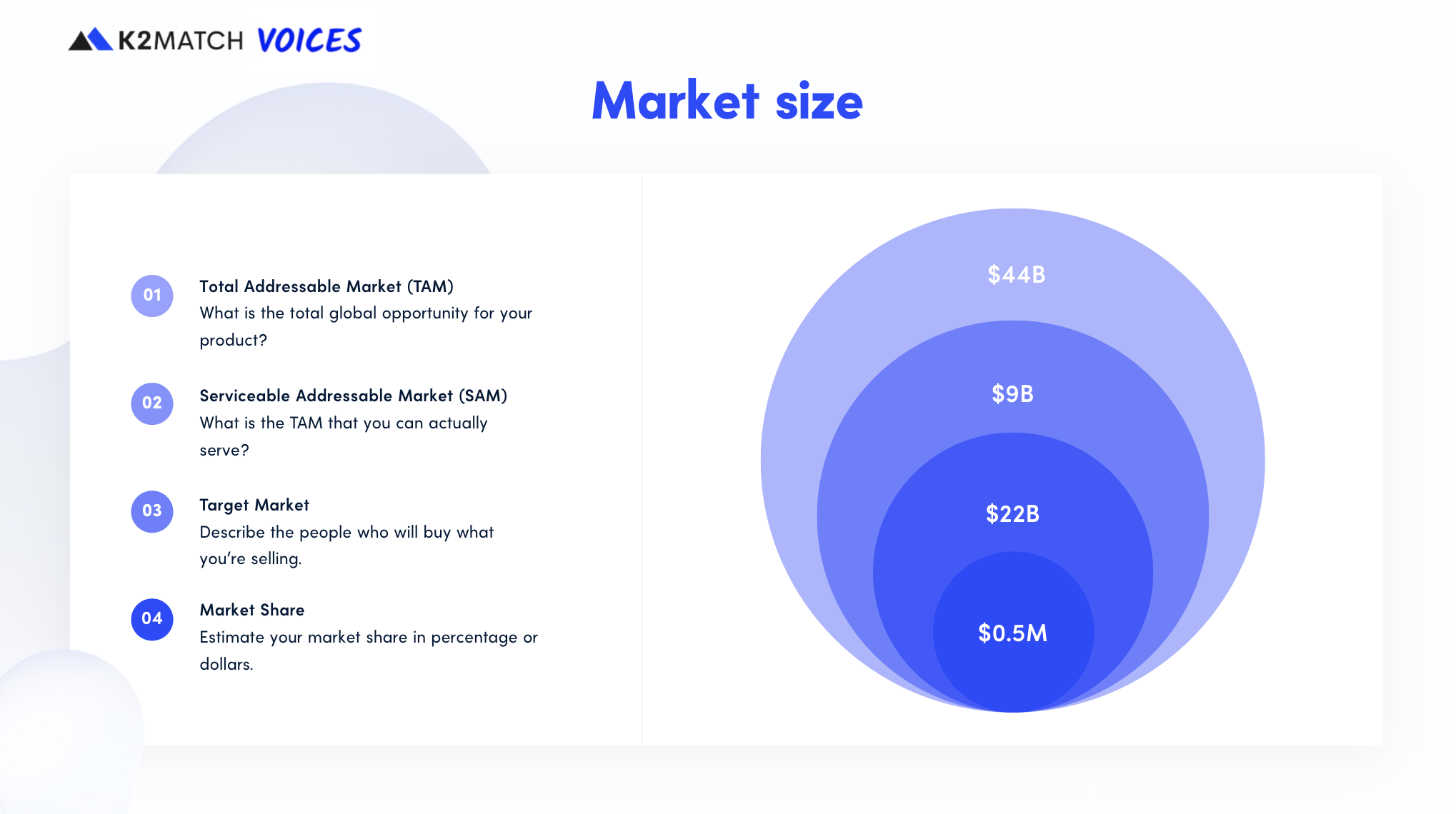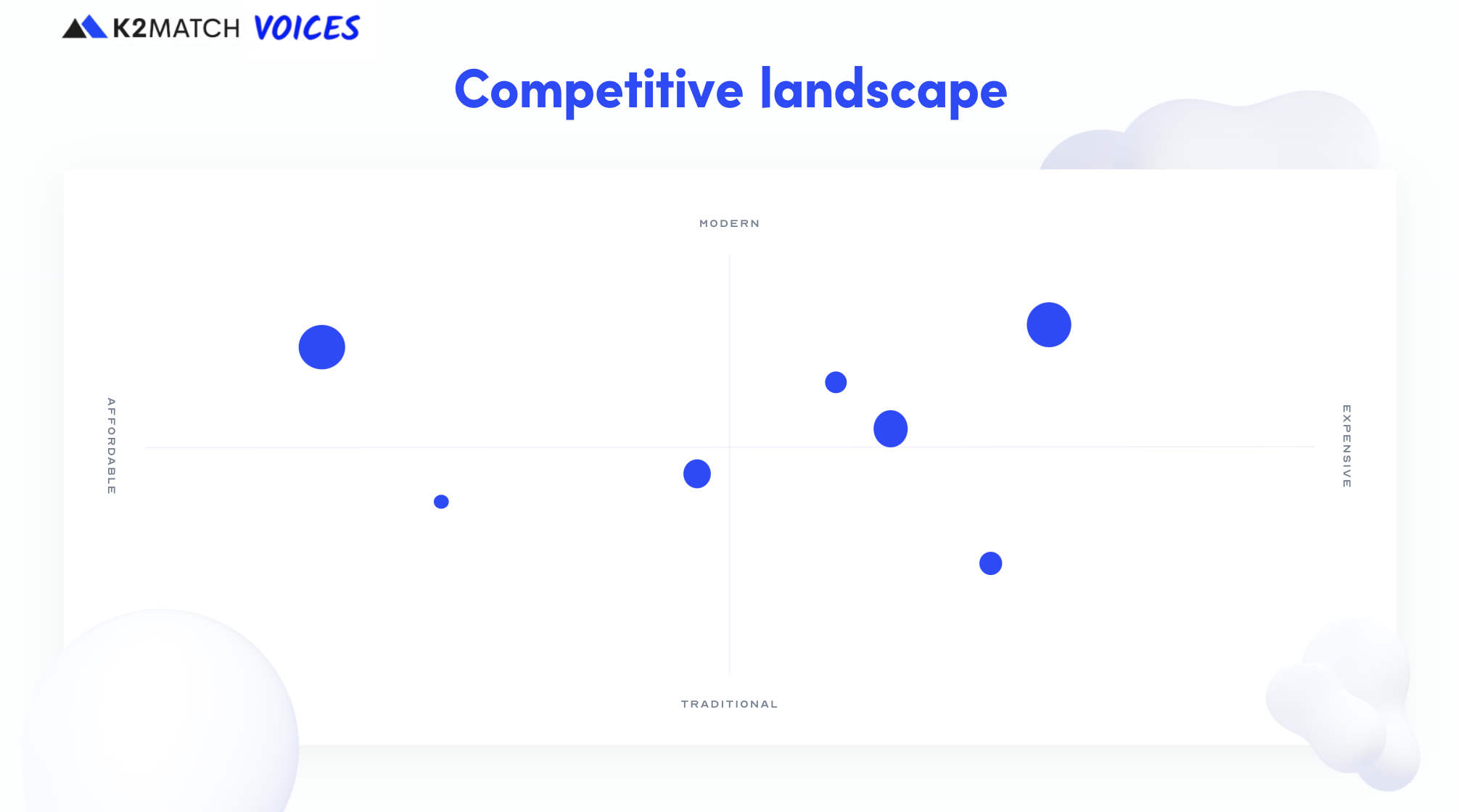Market Intelligence and Competition

Understand and know your Market
How big is the market potential? The estimated achievable sales volume of a company can be determined by a precise analysis of the industry and market. A close look at the market and the and competition helps identify opportunities and risks. In addition to the current view, assumptions about the reactions of the competition to the introduction of your product/your service Is an important information that should enable a better assessment of your business plan. A preferably honest comparison of the characteristics of the competitors and your own can show where you see advantages but also needs to catch up for your company.

Industry and overall market analysis
To choose the right strategy for your business idea, it is necessary to know your target market and your industry in detail. An investor may ask you for more detailed information about the factors that influence demand and sales strategy. Compile a catalog of all the questions that you want to answer. You can also work with hypotheses if you cannot find any facts. You will usually obtain the external data required for the analysis from trade journals, market studies, industry reports from banks, databases, the Chamber of Industry and Commerce or the patent office.
By evaluating all the information, you gradually refine your industry picture step by step, from the industry analysis to the market segmentation and the identification of your customers and the sales that can be realized with them. Give an overview of the industry to which your company will belong. Describe what important factors influence this industry. First, describe the status quo and then,based on that, the expected trends for the next three years. How might the industry and the market develop?
Give reasons for your assessments. In addition, explain by means of a competitive analysis which difficulties to be expected in exploiting the market potential. Many innovative industries are subject to such rapid development that a long-term view is pure speculation. Instead of losing yourself in untenable assumptions, you should limit your statements to a more manageable period of time.
Important: Use as many facts as possible. Your presentation must include concrete information on market size (sales and revenue), industry-specific returns and the role of innovations and market barriers, competitors, suppliers as well as customers and distribution channels.
Questions to be answered in this Chapter:
- Which industry does your company belong to? How large are turnover and sales (quantity/units or number of services) in this industry in total? If possible, try to concretize the information to your market environment.
- Name and describe the success factors of your industry.
- How and with what dynamics is your industry developing? What determines the growth in this industry?
- How high is the sales potential with individual customer segments now and in the future? How many such customers are there now and in the future?
- What are the returns in this industry?
- What external factors influence the industry (political, legal, technological, etc.)? To what extent do these factors affect your company?
- In the chapter "Opportunities and Risks", evaluate the biggest external factors and their impact on your company.
Market Segmentation and Target Customer
Segment your overall market: divide it into submarkets that are as homogeneous as possible. Common criteria are customer benefits, purchasing behavior - the age of customers often plays a role here - or regional/national/international differences. Determine the number of your customers and their behavior in each segment. This makes sense, because thanks to the precise knowledge of your target group, you can drive efficiently and effectively the marketing of your product/your service. Conclude the explanation of the market segments with the determination of your specific target customer group and your planned market success (sales, turnover, market share and profit). Take into account your sales strategy and the behavior of your competitors. Depending on the industry, you should also take price erosion into account. The customer structure is rarely homogeneous, even within a market.
Remark: Are those who use the product also those who will pay for it (e.g. users are children, will the parents pay)? A frequent mistake is that all planning is based on the user, but not to the actual buyer.
Questions to be answered in this chapter:
- How can the industry be segmented and how do the individual segments differ? Where do you position yourself? What is the current and future market volume of the individual market segments? What influences growth in the market segments?
- How profitable do you consider the individual segments to be, and how great is their potential?
- What market share are you aiming for in which market segment?
- On the basis of the benefit analysis: Who are your target customers and what are their buying motives and habits? What examples of your target customers can you provide? How large is the number of your customers?
- How dependent are you on key accounts?
Competitive Analysis/ Monitoring Competition
What are the competitors doing? To find out determine the strengths and weaknesses of your competitors. Evaluate your real and potential competitors according to criteria such as sales and revenue, pricing, growth, market share, cost structure, product lines, customer service, target customer groups, and distribution channel. Avoid too much detail for the sake of clarity. Include your own company into this assessment, and derive how big your competitive advantage will be by comparison. Also show where your company has weaknesses and explain strategies for dealing with them.

Competitors should not only be observed once, but be continuously monitored (not only at the time of the start-up, but also later). Ongoing monitoring means that the information can be used as an additional competitive advantage.
Above all, consider which of your competitors might be able to imitate your business model if successful. Experience shows that an idea as such is almost never copied, but almost always successful business models get copied. An attack by your competitors can lead to increased costs. This should be reflected in the best case/worst case scenario in the financial planning
Remark: Never claim you have no competition. Even even if you offer “unprecedented trips to the to the moon”: So far your target group has also traveled. Just not to the moon. Competitors are companies that solve the same problem/ meet the same need, not just competitors who have a similar offer.
Questions to be answered in this chapter:
- Who are your most important competitors (name them)? How will you monitor your competitors?
- What market shares do your competitors hold in the respective market segments?
- How profitable do your competitors operate?
- What business strategies do your competitors pursue? Which target customer groups do your competitors address? Are these customers tied to your competitors?
- How are you different from your competitors?
- Who might be able to exploit your business idea for themselves?
- Compare your competitive strengths and weaknesses with those of your most important competitors in an competitors overview table (development, sales, marketing, location, etc.). Good tools for that are the SWOT Analysis and the Porters 5 Forces.
Market Entry Barriers
It is essential to understand what happens when you become a new competitor that enters the market. Frequently market entry barriers, stand in the way and prevent new competitors from entering the market. They represent competitive advantages for companies already active in the market, since they prevent potential new competitors from entering the market, and they are not always easy to identify. Market entry barriers can look completely different. From technological factors to political motivations to capital requirements. Show here that you know your market and how you plan to face the challenges. Take this into account in your strategic plans.
Questions to be answered in this chapter:
- What are the market entry barriers? How can the market barriers be overcome? How much will it cost you to overcome these barriers?
- How will competitors react to your market entry? How do you respond to this reaction? What costs do you calculate for this?
The Article was provided by K2MATCH and inspired bei NUK

